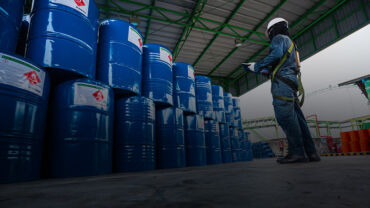Importers today are engaged in complex supply chains where products cross borders multiple times to take advantage of special duty savings programs, free trade agreements, and other manufacturing cost considerations. It is important to stay on top of the rules for allowing special duty exemptions since there are occasions when CBP will reconsider rulings previously issued that approved the qualification of a specific manufacturing operation.
Take for example a notice published in the United States Customs Bulletinon May 9th of 2018 concerning the revocation of a ruling letter that allowed for a duty exemption for automotive bumpers under Harmonized Tariff System (HTS) number 9802.00.50. This tariff provision allows for a duty exemption on the value of the material that is sent from the U.S. to be “repaired or altered” in another country and returned to the U.S. Duties are only paid on the value of the foreign processing and not the material when returned to the U.S.
To be more exact and to show where the pitfalls lie, the provision reads:
9802.00.50 – Articles returned to the United States after having been exported to be advanced in value or improved in condition by any process of manufacture or other means: Articles exported for repairs or alterations (not pursuant to a warranty).
What does “repair or alteration” mean? According to the regulations (19 C.F.R. § 181.64):
‘Repairs or alterations’ means restoration, addition, renovation, redyeing, cleaning, resterilizing, or other treatment which does not destroy the essential character of, or create a new and commercially different good from, the good exported from the United States.
In other words, the product must already be complete for its intended use. The provision is not meant to be used for a stage in the manufacturing process. Either the product is a completed article and needs to be repaired, or it is complete and needs to be “altered” in order to enhance its marketability. For example, a product is complete but not selling well because the color is out of style, and repainting the article a different color may increase the likelihood it can be sold.
So, what was the scenario in the May 9th bulletin where CBP changed its mind?
In an April 26th, 2017 ruling (NY284970), CBP approved an operation where the importer buys steel blanks in the U.S., stamps the blanks into bumpers, and then ships them offshore to be painted different colors. After the bumpers are painted, they are returned to the U.S. to be “…assembled into finished bumpers by adding sensors, fog lights, fasteners, brackets, electrical harnesses, step pads and end caps.”
It is unclear why CBP initially ruled the way they did as the ruling is no longer available to be viewed in CBP’s Customs Rulings Online Search System (CROSS). Perhaps it was a situation where the ruling was issued in haste and CBP feels it is not worthy of scrutiny. Nonetheless, in the revocation announcement CBP makes it clear that “The painting process is an intermediate processing operation…. As the painting procedure…is not processing of a finished good, the automotive bumpers … do not qualify for subheading 9802.00.50, HTSUS, treatment.”
We do not know to what extent the initial ruling and subsequent revocation had on the importers supply chain decision making process. We do know there was about a seven-month time frame between the first ruling and the advance notice of revocation (4/26/2017 to 11/29/2017). Duty savings may be only one consideration in the importer’s supply chain.
What may be more important is the risk faced by other importers who reacted to the first ruling, constructed their supply chains to take advantage of the special tariff provision, and then were not made aware of the revocation. They would be liable for knowing that the first ruling was no longer valid and would be in non-compliance if they continued to claim the duty preference. CBP has the expectation that importers would be aware of the revocation under its “reasonable care” standard.
To quote CBP in the Customs Bulletin:
Any person involved in substantially identical transactions should have advised CBP during the comment period. An importer’s failure to advise CBP of substantially identical transactions or of a specific ruling not identified in this notice may raise issues of reasonable care on the part of the importer or its agents for importations of merchandise subsequent to the effective date of this notice.
Staying well-informed of Customs and international court rulings and decisions is important for any importer who wants to maintain compliance and avoid being penalized. Managing time sensitive compliance operations while trying to pay attention to all the regulatory changes that occur can be made easier if trade compliance “content” (harmonized tariff numbers, rulings/decisions, ADD/CVD scope determinations, other government agency requirements) are linked to an importer’s product master database. Short of that, compliance personnel can subscribe to global trade newsletters and alerts, and hope they catch the issues that directly affect their supply chain models.







